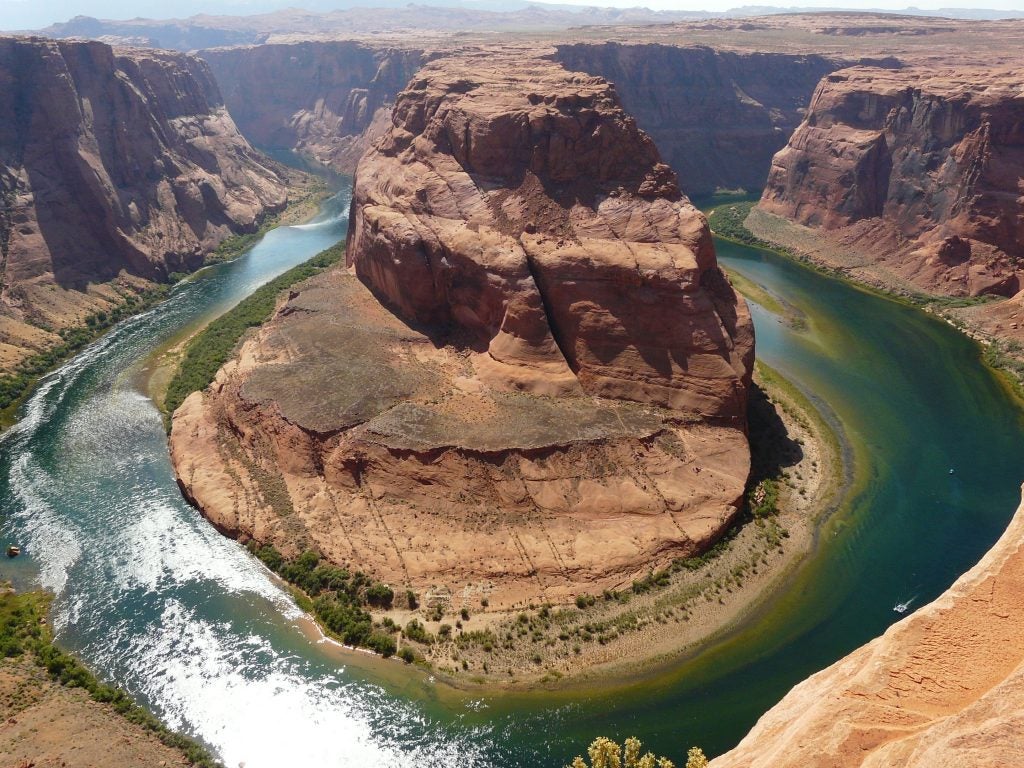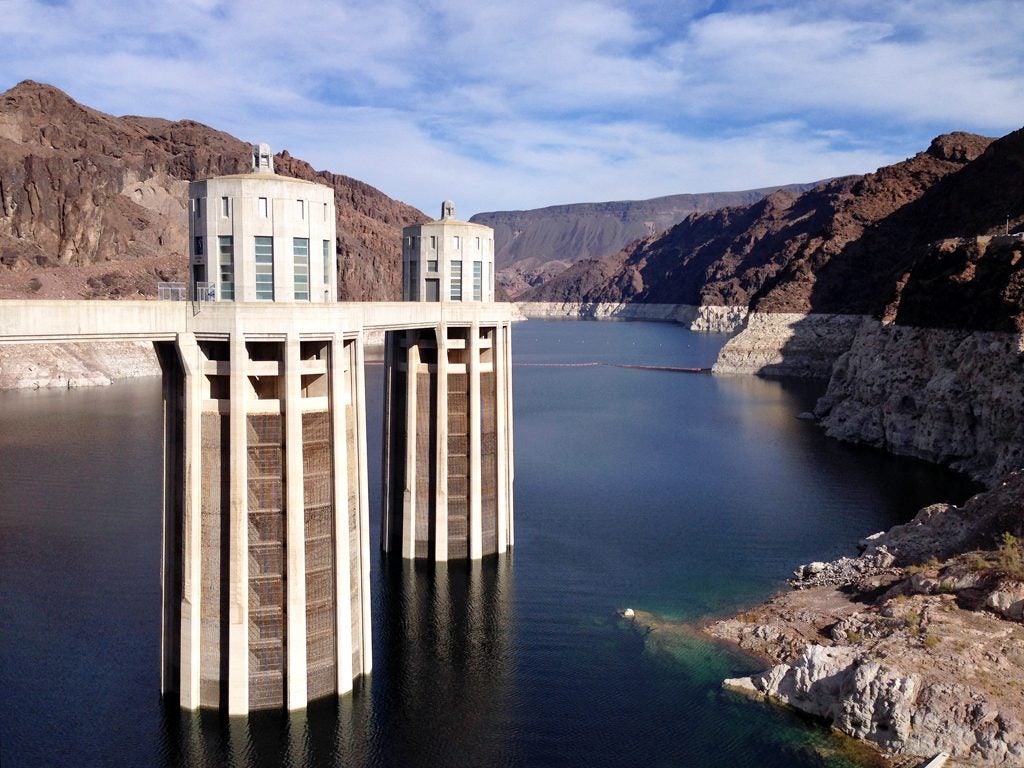It’s finally time to celebrate that federal and state agencies as well as local water districts have agreed on the terms of Drought Contingency Plan (DCP) agreements in both the Upper and Lower Colorado River basins to manage water more sustainably.
The DCP is intended to incentivize water conservation while protecting existing water rights, recognizing the values of the basin’s agricultural communities and respecting the need to protect the basin’s environmental resources.
Representatives from the seven Colorado River Basin states gathered in Phoenix today to mark the historic milestone and publish a joint letter to Congress. In the letter, the states urge Congress to pass federal legislation by April 22 to authorize the Department of Interior to implement the DCP to address “a looming crisis.” Environmental Defense Fund signed a letter with our conservation partners expressing strong support for the DCP and urging Congress to support its enabling legislation.
An iconic river and crucial water supply in trouble
We face a new water reality in the Southwest. Since 1988, the annual supply of Colorado River water has declined by roughly 15-20 percent compared to the “historical record” that began in 1922. The basin has experienced historically dry conditions since 2000, and combined storage in Lakes Powell and Mead has reached its lowest level since the 1960s.

The Colorado River provides water to approximately 40 million people and 5.5 million acres of irrigated agriculture in the Upper Basin (Colorado, New Mexico, Utah and Wyoming) and the Lower Basin (Arizona, California and Nevada), as well as in Mexico.
Declining reservoirs threaten water supplies that are essential to the economy, environment and health of the Southwest. The DCP demonstrates a widespread recognition that we must quickly adapt how we use, manage and conserve Colorado River water to build a future more resilient to climate change.
Three crucial elements of the drought plan, from an Arizona perspective
Creating a more climate resilient future will require three approaches that were instrumental to developing the DCP: conservation incentives, flexibility and collaboration.
These three approaches were especially prominent in Arizona, which faced very difficult decisions on how to plan for the largest cuts in the Lower Basin. This is because the Central Arizona Project has junior rights to Colorado River water, subordinate to other Lower Basin water rights including California, and consequently is first in line for cuts.Seven-state drought agreement marks a step toward building resilience in the Colorado River basin Share on X
Arizona’s implementation plan included input from a diverse 40-member Arizona DCP Steering Committee. I was honored to serve as a conservation representative on this committee along with other stakeholders – including farmers, ranchers, cities, tribes, state legislators, industry, business leaders, water agencies and environmental groups – who together hammered out an agreement for sharing the benefits and burdens of the DCP within the state. Arizona tribes, led by Colorado River Indian Tribes and the Gila River Indian Community, demonstrated extraordinary leadership and willingness to participate in conservation and storage agreements.

Under the DCP, when Lake Mead falls below elevation 1075 feet, the supply of Colorado River water delivered to Central Arizona will be cut by roughly one third – a cut of 512,000 acre feet per year out of an annual average quantity of 1,560,000 acre feet. (Photo Credit: Steve Boland)
While many Arizona water issues remain, the Arizona implementation plan increases opportunities for flexible water sharing agreements between cities and agriculture and incentivizes system conservation and storage in Lake Mead.
Next step: Congress
The work in the basin to incentivize conservation and increase flexibility in collaborative processes must continue. Federal funding will be needed to help implement the DCP and address other major regional issues, including the environmental and health risks of a shrinking Salton Sea. The next step is for Congress to pass legislation as soon as possible to authorize implementation of the DCP.
But for today, let’s recognize the extraordinary work of tribes, state and federal leaders, urban and rural water users, and conservation stakeholders that led seven states to come together on the DCP. It is a step in the right direction toward creating a future in which water supplies for people and the environment that are more resilient to climate change.










One Comment
Thanks on your marvelous posting! I genuinely enjoyed reading it,
you might be a great author.I will remember to bookmark
your blog and will often come back later in life. I want to encourage you to continue your great work, have a nice holiday weekend!